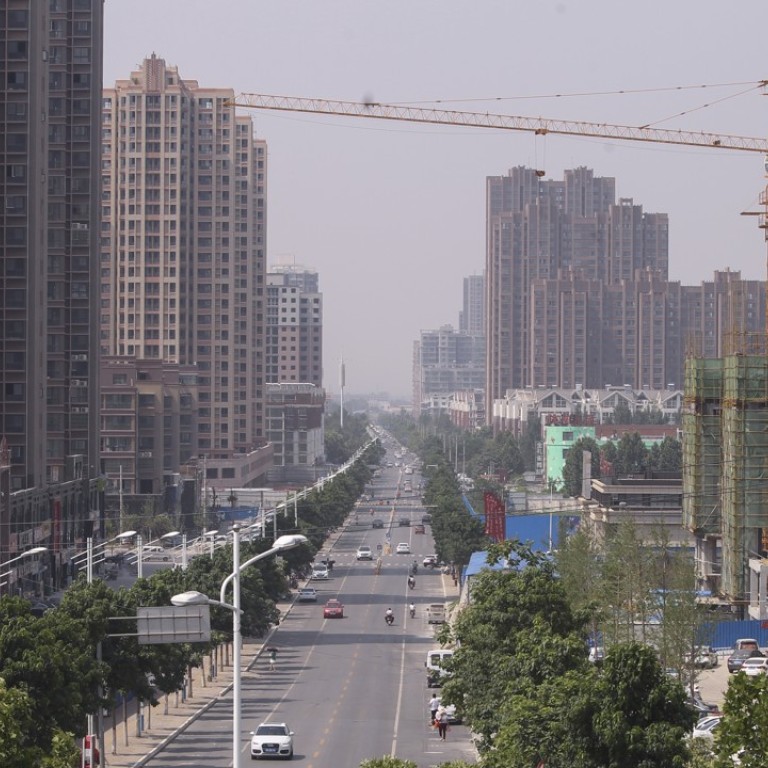
China has US$6 trillion in hidden debts with ‘titanic’ credit risks, S&P says
Ratings agencies warn of a ‘debt iceberg’ accumulated by local governments as Beijing tries to curb unauthorised borrowing
China’s local governments may have accumulated 40 trillion yuan (US$6 trillion) worth of “hidden debts” that are not reflected in official figures, which is “a debt iceberg with titanic credit risks” to the world’s second biggest economy, S&P Global Ratings said in a report.
If all that off-the-books debt – mostly borrowed by local government financing vehicles, known as LGFVs – were included in China’s debt figures, the ratio of all government debt to GDP could have reached “an alarming level” of 60 per cent in 2017, the ratings agency said.
The 60 per cent line is highlighted in the Treaty of Maastricht, a founding document of the European Union, to discipline fiscal spending of its member countries. Meanwhile, the US and Japan have much higher government debt levels, which exceeded 100 and 200 per cent respectively this year, according to data from the International Monetary Fund.
According to official figures released by the Chinese Ministry of Finance, local governments had combined outstanding debts of 17.7 trillion yuan (US$2.5 trillion) at the end of August, although Beijing has admitted the existence of “hidden debts” and attempted to curb unauthorised borrowing by local authorities.
China’s state-owned banks told to stop lending to local governments as debt crackdown intensifies
According to the S&P report, penned by analysts led by Gloria Lu and Laura Li, the hidden debts make defaults by Chinese LGFVs more likely, creating a “formidable task” for China’s top leadership to manage the aftermath – for now China has a record of zero LGFV defaults, although a few bond defaulters are linked to local government entities.
S&P did not mention whether the finding would lead to a review of China’s sovereign rating.
Chinese economic growth is currently losing steam amid the trade war with the US and Beijing is shifting gear to aid growth by accelerating infrastructure spending and moderately easing monetary policy.
The S&P report comes a week after China’s Ministry of Finance sold US$3 billion worth of dollar bonds in Hong Kong, including US$500 million of 30-year bonds with a coupon rate at 4 per cent. The Chinese ministry, in the same practice as last year, did not invite any international ratings agency to rate the bonds.
How one city’s borrowing practice highlights China’s daunting financial risks
S&P has been warning about risks of Chinese LGFVs for months. In January, S&P said China was likely to see the first bond default by a local government this year.
“Now the default risk of LGFVs is higher than before … even as it is difficult to forecast the specific time when the first bond default will happen,” Richard Langberg, S&P Global Ratings analyst and one of authors of the report, said.
Moody’s Investors Service last month downgraded five Chinese non-financial corporate and infrastructure issuers owned by regional and local governments in Tianjin, Jiangsu, Hunan and Hubei, while Fitch Ratings said in July that authorities’ efforts to reduce implicit and explicit credit guarantees offered by local governments had increase default risks of “non-core” issuers.
Jiang Chao, chief economist at Haitong Securities in Shanghai, wrote in a research note in July that hidden debts by local governments could be as much as 30.6 trillion yuan (US$4.4 trillion) in 2017. He wrote that the annual growth rate of outstanding hidden debts over past three years was more than 77 per cent, much higher than the 2.4 per cent of disclosed debts.
To figure out the hidden liabilities among local authorities, China’s finance ministry has required regional governments to submit data involving implicit debt balances and assets held as of August 31, according to a statement released by the economic regulator earlier this month.
The Chinese government has yet to release any estimates about the hidden debt size, although Beijing has been repeatedly reassuring investors that China’s debt risks are under control.
S&P’s Langberg said Beijing’s tolerance for debt growth would be temporary.
“We do not think this is game changing … over the longer term [reducing debt level] still is the priority of the Chinese government,” he said.

